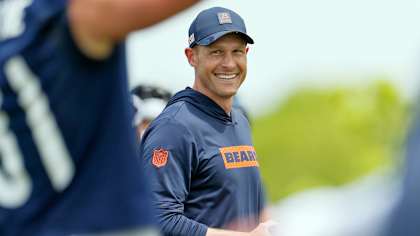The upcoming and underrated Canucks bounce back season belongs to Quinn Hughes
A lot of ink has been spilled about ‘bounce backs’ and the need for them if the Vancouver Canucks are going to succeed in the 2025-26 season. Whether we’re talking about bouncing back from injury or poor performance – or both – it’s by now been well-established that the Canucks’ fortunes this year rely on rebounds from the likes of
But there’s another bounce back season in the making that no one is really talking about, and that’s the one that is almost certainly
Now, we’ve got to couch this concept in a whole lot of caveats. By no means are we, or anyone reasonable, suggesting that Hughes had a bad season in 2024-25. But by his own, incredibly lofty standards, he did have a worse season in 2024-25 than he did in 2023-24 – and we have to imagine that Hughes is both aware of that fact and prepared to do something about it in the present day.
If we run the most basic numerical comparison, the drop-off can be hard to see. Here’s a quick Hughes head-to-head:
| Games | Goals | Assists | Points | PPG | TOI | |
| 2023-24 | 82 | 17 |
75 | 92 | 1.12 | 24:41 |
| 2024-25 | 68 | 16 | 60 | 76 | 1.12 | 25:44 |
From NHL.com
In comparing last season to the season prior, Hughes obviously played fewer games, but that’s the only visually apparent difference. He scored goals at a higher rate, earned assists at a lower rate, but wound up with the exact same points-per-game. The 2024-25 Hughes actually played a full 1:03 more per night on average than the previous edition.
In other words, Hughes scored as much and took on even more responsibility.
Once we get into the fancier stats, a slight difference begins to emerge, but with emphasis on the ‘slight.’ Take a look:
| Corsi | Expected Goals | Shot Control | Scoring Chance Control | High-Danger Chance Control | |
| 2023-24 | 57.15% | 54.64% | 53.24% | 57.66% | 53.92% |
| 2024-25 | 55.71% | 54.19% | 54.51% | 55.33% | 51.94% |
From NaturalStatTrick.com, representing 5v5 play
Here we have some perceptible, roughly 2% drops in things like Corsi, control of scoring chances, and control of high-danger scoring chances in particular. Hughes’ rate of Expected Goals stayed roughly the same, and his shot control actually increased.
You can see why we felt the need for all those caveats. Both statlines listed above are elite. One is just slightly more elite than the other.
Where Hughes’ ‘room for improvement’ – if we can call it that – is most clearly shown is in his direct on-ice results. To some extent, that includes the Canucks’ overall record. But we’re talking more about goals for and goals against here:
| On-Ice Goals For | On-Ice Goals Against | Difference | |
| 2023-24 | 92 | 55 | +27 |
| 2024-25 | 65 | 57 | +8 |
From NaturalStatTrick.com, representing 5v5 play
The 2023-24 Hughes played in 14 fewer games, and somehow allowed two more goals against at evens, to go along with 27 more goals for. It’s an enormous difference. And, yes, this is more of a team result than something that can be laid at the feet of any individual.
But we have to think that Hughes himself takes personal responsibility for it, and is personally dedicated to turning that result around in 2025-26.
We haven’t said the word ‘Norris’ yet, and that’s with intention. Hughes went from Norris Trophy winner in 2023-24 to Norris Trophy nominee (and third-place finisher) in 2024-25, which, again, cannot be called much of a drop-off. But the lack of any pushback from the Canucks faithful about Hughes losing out to both Cale Makar and Zach Werenski last year should speak volumes.
There would have been an uproar had Hughes lost the Norris race in 2023-24. That’s what a true bounce back for Hughes means – getting back to the point where he’s very much in the running as the best overall defender in the sport of hockey.
And here’s how we really know that Hughes had a worse season in 2024-25 than he did in 2023-24: we all saw it. The eye-test has its strengths and weaknesses, but the Hughes of last season just did not look as complete out there as did the Hughes of the previous year. And, as we eventually learned, that was with good reason.
Hughes tore a ligament in his hand in December 2024, missed minimal time, and played through until January with that odd, web-shooter-esque cast on his hand. That’s something that will obviously impact the game of someone who handles the puck so frequently and so deftly.
Then in late January, Hughes suffered an oblique tear. That forced him to miss the 4 Nations Face-Off, much to his disappointment. He returned in late February, but another injury in early March, possibly related to the oblique again, knocked him out for ten days again.
To call it an injury-plagued season might be a touch dramatic. But it was a season in which injuries impacted Hughes performances essentially throughout.
Hughes now enters the 2025-26 season healthy, happy, and fully aware that he can do better this year than he did last year. Of all the ‘bounce backs’ we’re counting on, this one seems the most certain to happen. And while the other potential bounce backs, like those we’re waiting on from Pettersson and Demko, will make a discernable difference, we can’t discount the difference made by a Hughes returning back to his old Norris Trophy standards.
Hughes is, and will remain, the Canucks’ most important player. Even a slight uptick in his individual performance should translate very directly into team success. And if Hughes can take it one step further, and improve not just on his 2024-25 campaign, but even upon his 2023-24 campaign?
Well, that’s just an exciting notion to think about.
Bears Recent $43 Million Addition Already Close to Getting Labeled a Bust

The Chicago Bears took a gamble when they added veteran Grady Jarrett to their defensive line this past offseason.
It’s a gamble that has yet to pay off. Chicago was hoping to get a proven disruptor on the interior of the defense who could both pressure QBs and help shore up run defense. So far, that hasn’t happened. Instead, Jarrett is moving quickly toward earning the dreaded “bust” label.
The Bears’ offseason commitment to Jarrett underscores how much they believed in his impact. They inked the two-time Pro Bowler to a three-year pact worth around $43 million, including $28 million guaranteed.
With his guaranteed salary stretching into 2026, there’s no easy way out of this deal, which is why it’s already starting to look like a mistake by general manager Ryan Poles and company.
Bears Defense Has Started Slow Out of the Gate in 2025
Chicago’s defensive struggles might be making Jarrett’s current lack of production stand out even more. The Bears have been gashed on the ground and inconsistent at generating pressure, issues that directly overlap with what Jarrett was signed to help fix. Heading into Week 6, Chicago is ranked 31st against the run, giving up almost 165 yards on the ground per game.
Through four games, Jarrett has recorded just four total tackles, three QB hits and no sacks while playing slightly more than half of Chicago’s defensive snaps. His overall PFF grade (55.7) is currently ranked 112th out of 186 qualifying interior defensive linemen.
As it stands, it’s unclear whether Jarrett is slow ramping up due to age and injury issues, or whether Chicago’s defense is just taking longer than anticipated to get rolling, Jarrett is 32 years old and is still working his way back from an ACL tear he suffered in October 2023. He managed 53 tackles and 2.5 sacks in 2024, but a lingering knee issue has landed him on injury reports this fall and could be limiting his explosiveness.
Grady Jarrett Needs to Start Producing for the Chicago Bears ASAP to Avoid Being Labeled a Bust Signing

GettyChicago Bears DT Grady Jarrett is already flirting with the bust label heading into Week 6.
While Jarrett was named a team captain leading up to the season and has been a solid leader in the locker room, he wasn’t paid solely to provide veteran leadership. He was brought in as a tone-setter. With so much guaranteed money and so little production, the optics of his signing are going to sour quickly if the tide doesn’t turn. October and November will be huge for Jarrett, as he needs to show that he can still be a difference-maker on the defensive line.
Bears defensive coordinator Dennis Allen thinks injuries across the entire defense are a huge reason his unit has struggled early on.
“When you have a lot of moving parts, it makes it a little bit challenging,” Allen said, via 670 The Score’s Chris Emma. “So, hopefully we can get guys back, stay healthy and develop a little bit of continuity within the group. There’s something to be said about guys being able to work together for extended periods of time. When you’re able to do that, you kind of understand where each piece to the puzzle is going to fit.”
Jarrett’s one of the guys the Bears want to see healthy, but since he’s not practicing even after the team’s bye week, there’s definite reason to be concerned.




